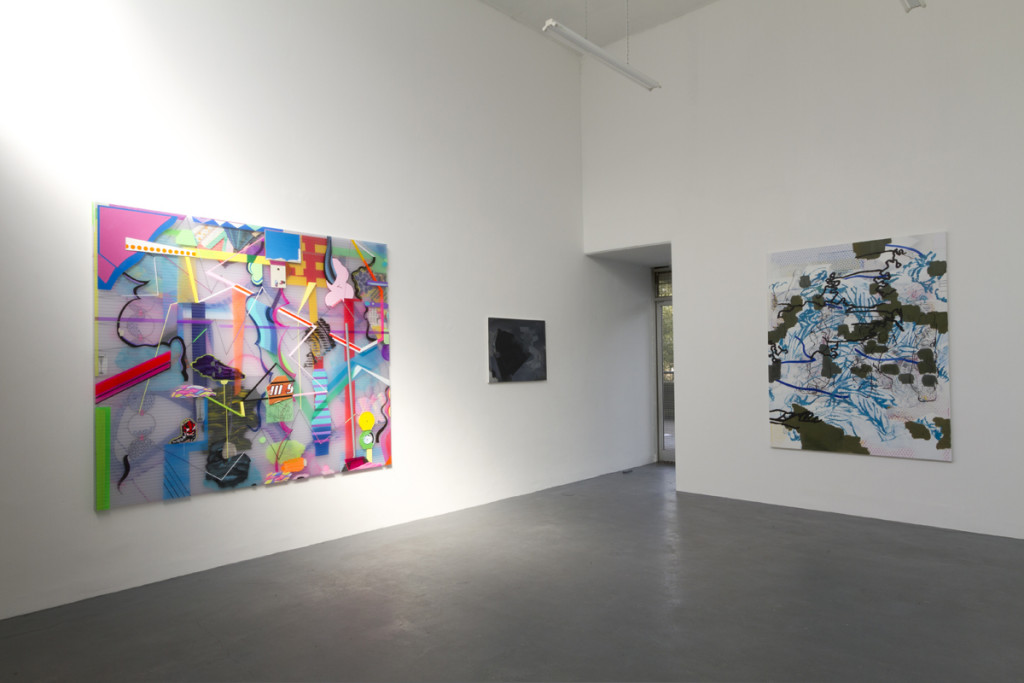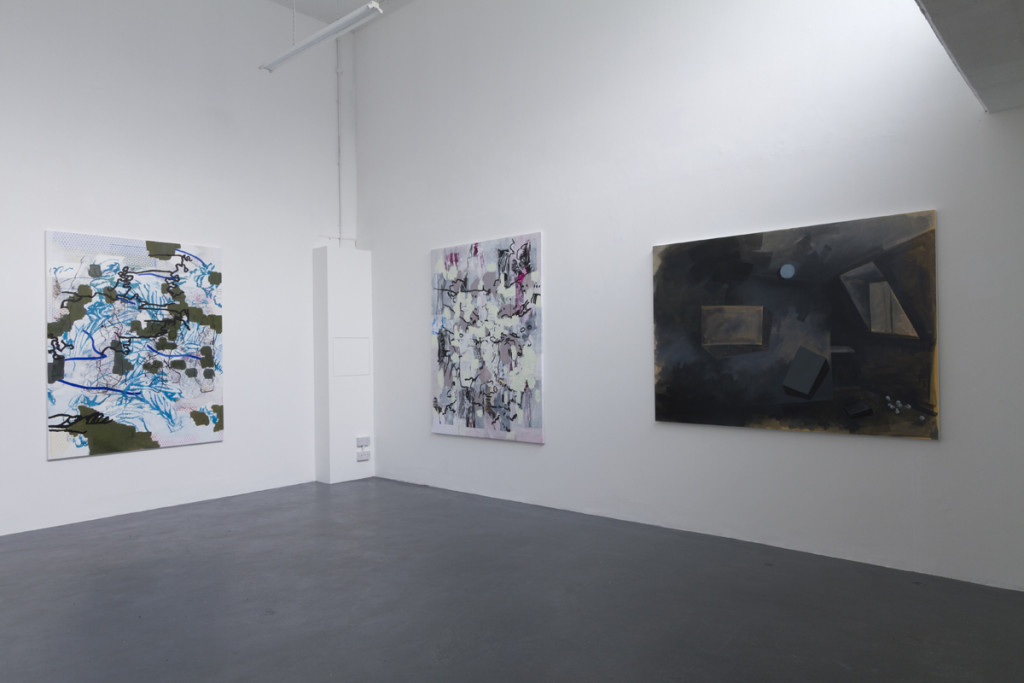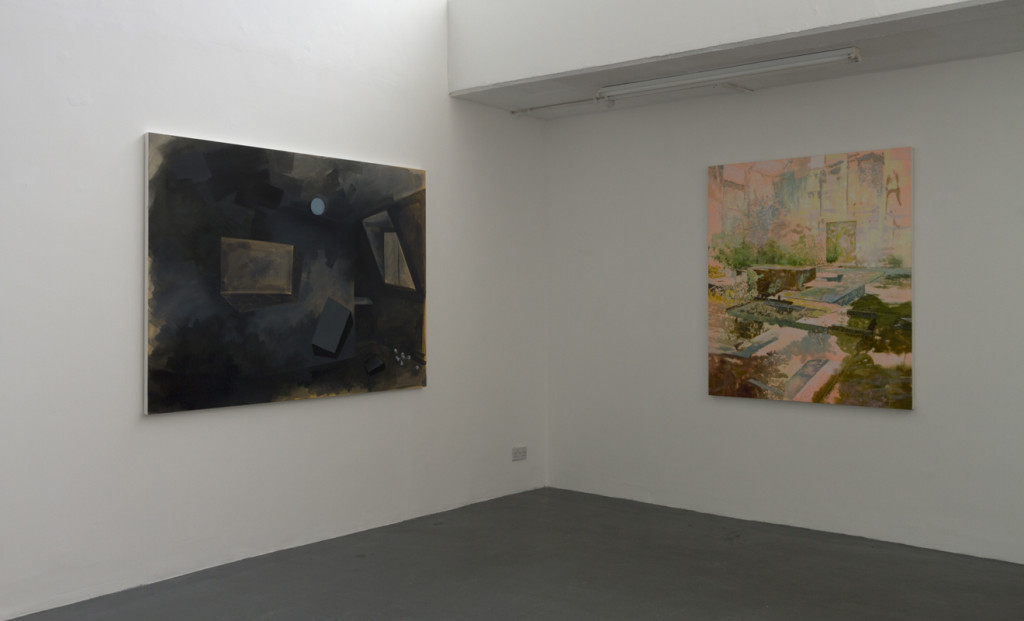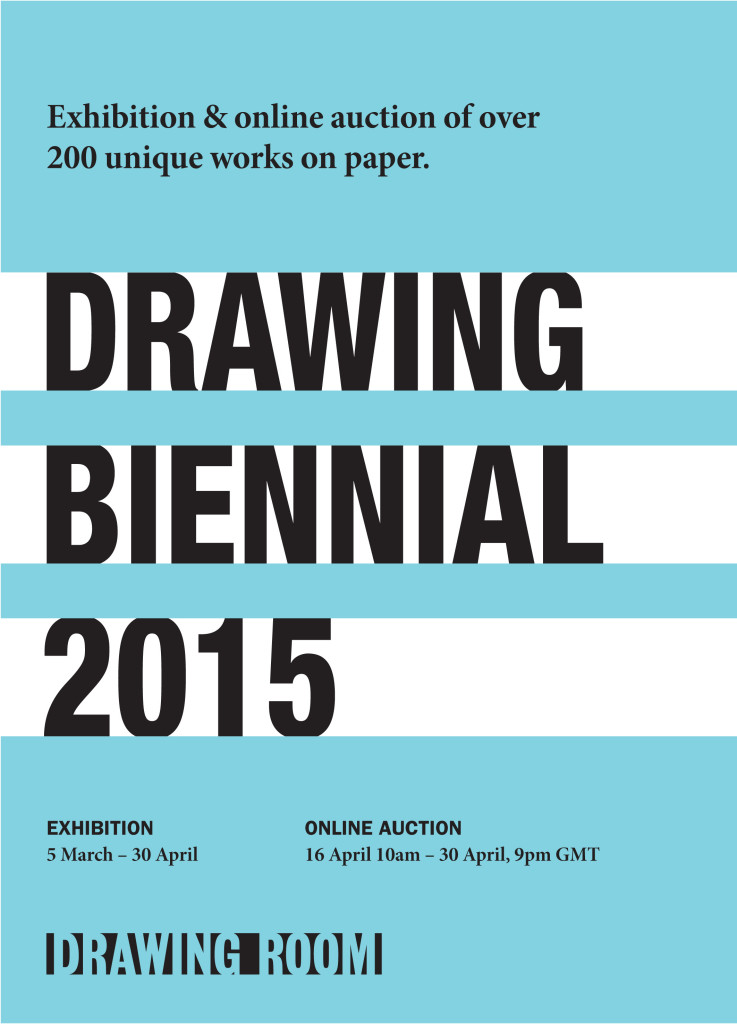Category: Drawings
Exhibitions
2019
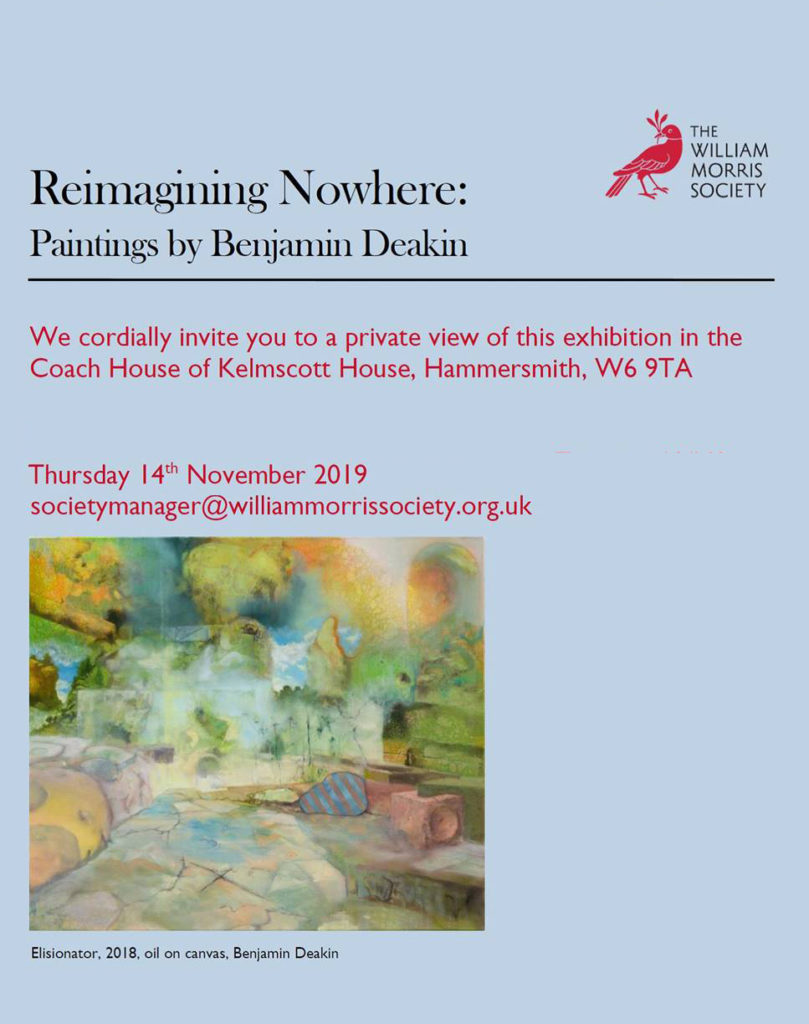
The William Morris Society
NOVEMBER 14, 2019 – FEBRUARY 29, 2020
A new exhibition by contemporary British artist Benjamin Deakin exploring the notions of Utopia, Dystopia and the legacy on visual culture of Morris’s News from Nowhere.
Deakin is particularly interested in combining historical and contemporary landscape painting styles and repeat patterns bringing an immediate connection with Morris’s designs. The exhibition consists of some newly created paintings and prints together with others first seen in Deakin’s solo exhibition Seeking News from Nowhere last year. Deakin says the exhibition will ‘highlight that Morris’s vision of utopia sits alongside a wide variety of writers of Victorian science fiction that have left a strong visual legacy’. He hopes the exhibition will introduce more contemporary art lovers to Morris’s work. Reimagining Nowhere is also influenced by other quasi-utopian literature, particularly that of E A Abbott, H G Wells and Aldous Huxley. Other influences include surrealist painter and war artist Paul Nash and Graham Sutherland, who worked in glass, fabric, prints and portraits.
News from Nowhere first appeared in the form of serial publication in the Socialist League’s Commonwealth between January and October 1890. It seems particularly fitting that the Reimagining Nowhere exhibition is in the Coach House at Kelmscott House as this is where the novel’s narrator begins his dream.
The exhibition will open on Thursday 14th November.

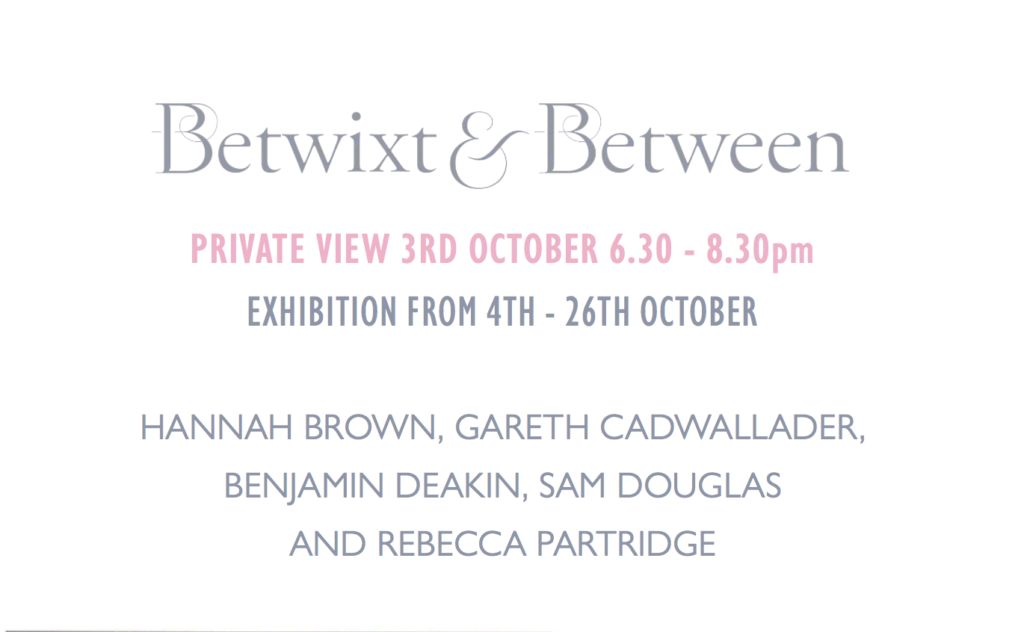
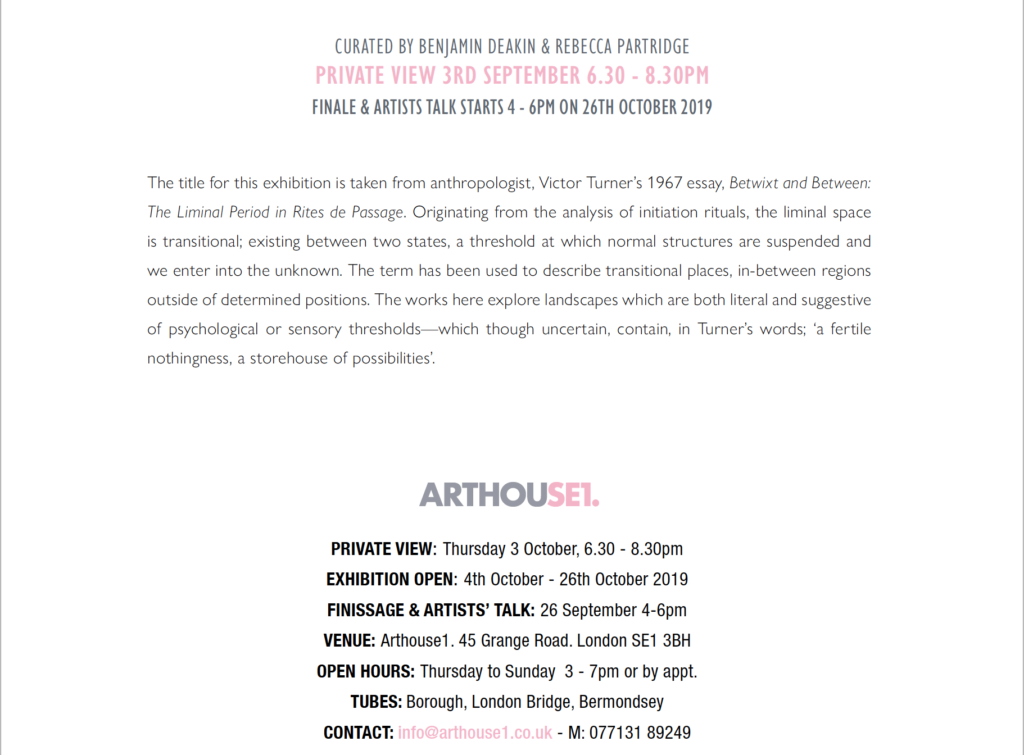
2018
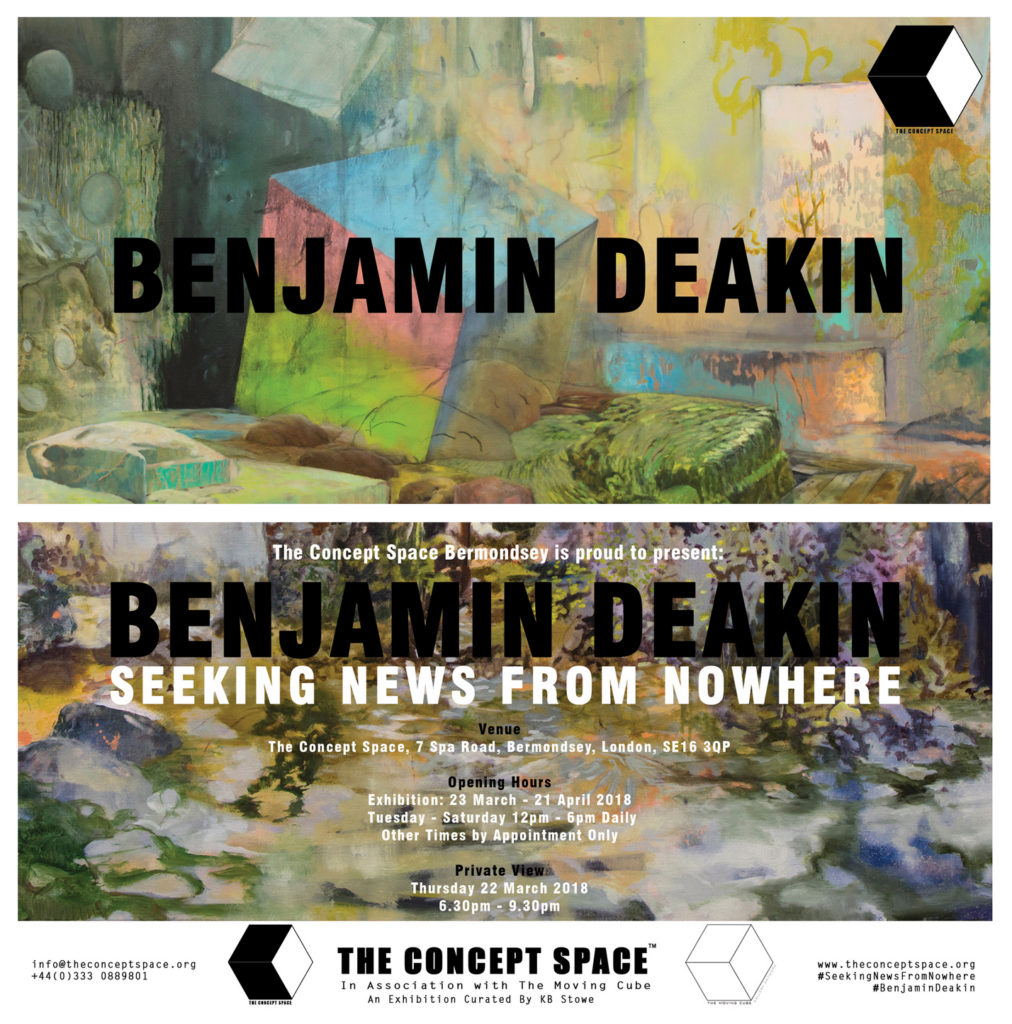
I am excited to announce my solo show “Seeking News from Nowhere” at The Concept Space in Bermondsey.
The Private View: Thursday 22nd of March 6.30-9.30.
Exhibition: Tuesday-Saturday 23rd March- 21st of April 2018
The Concept Space,
Bermondsey,
London
SE16 3QP
2017:
Studio 1.1
BENJAMIN DEAKIN, SAM DOUGLAS, ROSS WALKER
‘We are building a new world…’
2 – 25 June 2017
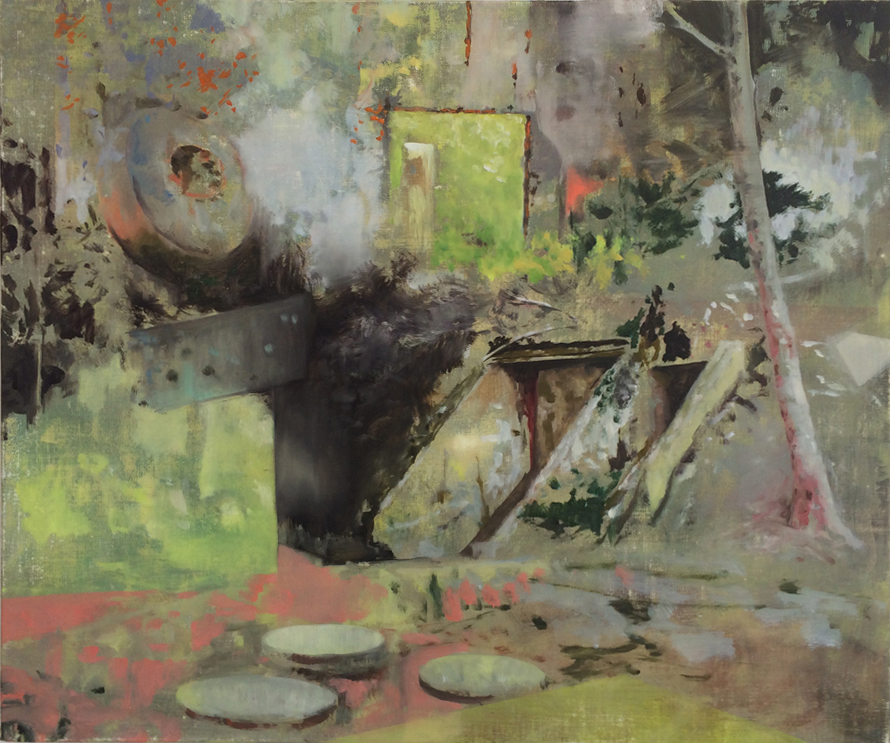
Place is where we find ourselves, assuming we feel the need to look – though as Gertrude Stein said going back to Oakland, the small California town where she grew up ‘there’s no there there.’ Better perhaps to take comfort in thinking we know where we are. There is a place (somewhere a place FOR US). There IS a place.
In paintings that collage spaces, collapse time and construct settings, these three artists bring us to a crux of painting – recognition as it collides with identification and an awareness of loss. In their very dfferent ways (and they were quite surprised to be joined together), whether abstract or figurative (though there are always figures there – it’s us, standing outside the painting) these artists show us places we’ve never been, could never get to, can only remotely inhabit – ‘I’ll need my oxygums cos we can’t breathe out there…’ Marine Boy returns from adventures that seem quaintly old-fashioned or maybe out of time. And there is no real time only real space, for us. In Deakin the space is possible but unreal, in Douglas the space is likely but unreachable (having long gone) and in Walker the space is impossible but materially absolutely real. A sense in Eliot’s words “not only of the pastness of the past, but of its presence.”
And finally, a political note. Now we’ve been turfed out of the place we thought we occupied in the world, and have been given no idea at all of where were heading, it seemed timely to borrow the bitter irony of the title of Paul Nash’s masterpiece.
http://www.studio1-1.co.uk/ben-deakin-sam-douglas-ross-walker-we-are-building-a-new-world/
2016:
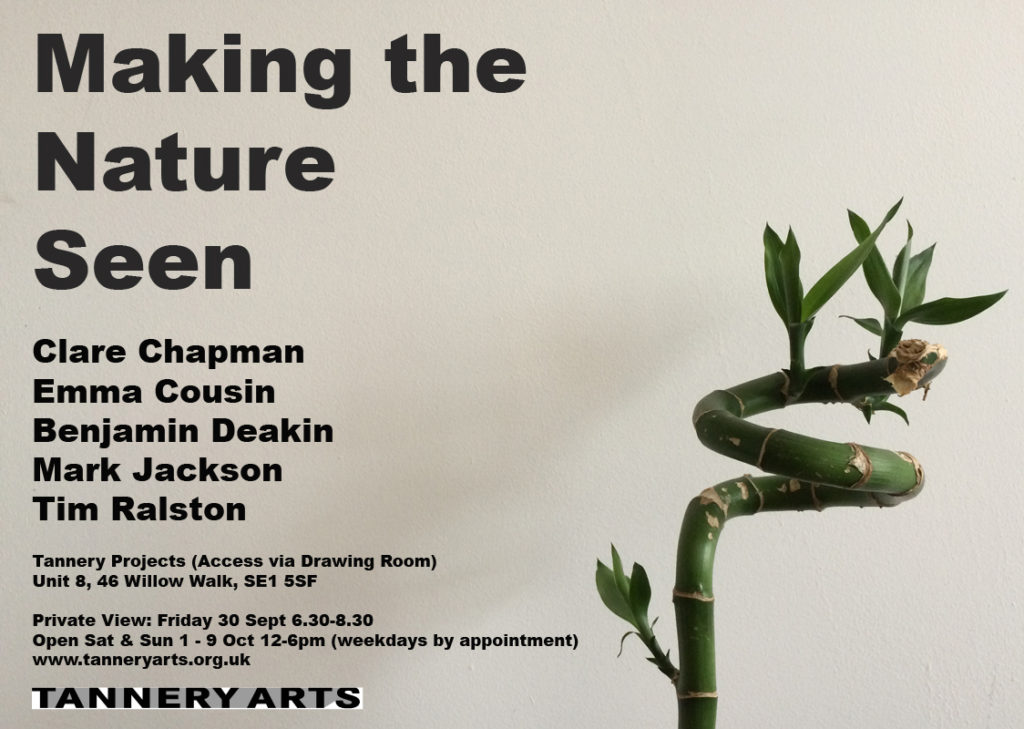
Making the Nature Seen
Tannery Projects
30th September – 9th October 2016
Clare Chapman
Emma Cousin
Benjamin Deakin
Mark Jackson
Tim Ralston
Curated by Benjamin Deakin
Hybridisation and mutation are key characteristics of the paintings shown in Making the Nature Seen. By proposing speculative connections between pieces, this exhibition extends this notion of shifting form and meaning just as the individual works explore ideas of mutability.
Emma Cousin and Mark Jackson both examine the visual cues that are commonly used when representing the body. In Jackson’s case this is in the elements that make up the face, in Cousin’s the symbolic relationship of limbs, specifically legs, to language and humour. Cousin refers to the legs in her paintings as a “syntax” and this is echoed in Jackson’s subtle fragmentation and dislocation of facial features.
There are parallels too in Jackson and Ralston’s use of surface, flatness and luminosity. Jackson’s paintings have an almost seamless quality and a flatness that comes from his interest in the unifying aesthetics of the digital combined with a resolutely material relationship to painting. Ralston combines a range of painting styles and techniques and often works back into the underlying ground in a reductive process. Sanding, scouring and scraping combined with smooth veils of airbrushed paint give rise to sharp conjunctions of surface textures and lively compositions that nevertheless achieve a feeling of depth. Ralston is interested in the city as a scene of dynamic change and expansion. The highly layered paintings are made with a similar mix of consideration and chaos that informs the city’s growth.
Ralston and Deakin share a common interest in creating hybrid spaces, in Deakin’s case ones that fall somewhere between landscapes and interiors. Deakin’s paintings refer to the conventions of landscape painting but suggestions of scale and distance are often disrupted, lending the paintings a theatrical air and a sense that these are expectant spaces, awaiting unseen actors.
Balanced between the seductive and the grotesque, the objects in Clare Chapman’s paintings appear to inhabit their own spatial environment, one which is neither interior nor exterior. The effect of light and shadow imply space and volume but scale is left undefined leaving the object on the threshold between being explicit and abstract. It is the push and pull of these implied characteristics that are important to Chapman just as the volume of her forms come in and out of definition.
Making the Nature Seen proposes an attitude to the nature of images, their mutability, and how we attribute meaning to them given their constantly shifting characteristics. The show attempts to multiply this effect, adding more contingency and openness to these individual works by combining them in a group setting.
Artist Talk Chaired by Artist and Writer Paul O’Kane
Saturday 1st October 4pm

Unit 8, 46 Willow Walk, London, SE1 5SF
www.tanneryarts.org.uk
2015:
| This exhibition explores the illusionary depth of the painted surface. Screen in this case becomes a metaphor for the painted surface, to operate as a dynamic space in which the intentions and efforts of the artist are simultaneously revealed and concealed. Screens slide, intersect and divide pictorial space, and in works such as Velázquez’ ‘Las Meninas’, they can become the painting within the painting.One of the unique properties of painting is that decision-making strategies made by the painter are often apparent in the final work even when they weren’t intended to be. ‘Screened’ or ‘veiled’ within the surface’, the best efforts to cover their tracks – by even the most assiduous artists – are futile as paint becomes more transparent over time revealing the struggles and accidents beneath. This phenomenon is known as pentimento, where each layer of a painting is one that reveals as much as it obscures.Benjamin Deakin’s paintings appear at first glance to be firmly rooted in the landscape tradition. On closer inspection they reveal themselves to be constructed, almost as theatrical spaces. He has an on-going interest in the way in which landscapes and environments acquire cultural significance and how this affects our relationship to them in visual media. His work is informed by travels to parts of the world where such interpretations can be multi-layered. These interests have taken him to the Himalayas, the Arctic Circle and the Deserts of Bolivia among other places.Sarah Macdonald’s paintings examine the act of looking. Planes of colour build layers that distort scale, structure and surface to create an uncertainty in the paintings. The paintings aim to explore complex relationships around the value of time within the painted surface. Through recent motifs such as park furniture, coffee cups on a train table, a bus shelter, a highland landscape she invites the viewer to consider the status of space and form within the virtual space of the work.Danny Rolph’s practice draws from quotidian recollections. His visual language is informed by memories of sky high views growing up by London’s City Road and the urban vernacular of its surroundings; chrome yellow anti-graffiti paint on communal stairway walls and words like SHAM 69 sprayed on play ground climbing frames. In his paintings the urban meets the historical; the Post Office Tower and Tiepolo meet in an iconoclastic clash to the sounds and graphics of Top of the Pops, Pong and Subbuteo; celebrated and understood in equal measure.Diana Taylor’s paintings explore redundancy, failure and ruin in visual culture. Screen-printing, photocopiers and analogue projectors are used, as much for their visual qualities as for their inherent ability to produce failures. Digital screen glitches combined with patterns from cross-stitch and tapestries create a palimpsest of collaged cultural media, highlighting the contradictions and failures of our times. |
| Opening times: Fridays & Saturdays 12-6pm Turps Banana, 12a -13a Taplow, Thurlow Street, London, SE17 2UQ, (corner of East Street and Thurlow Street – walk up the ramp; 1st floor)For further information contact the gallery: +44 (0)7866 94661 gallery@turpsbanana.com http://turpsbanana.com |
Installation shots of Screen
Curated by Lubomirov and Angus-Hughes
Alessandra Falbo | Alexander Tucker | Amanda Whittle | Angus Braithwaite | Artemis Potamianou | Beatrice Haines | Ben Swift | Benjamin Deakin | Brian Hodgson | Charlie Warde | Daryl Brown | Frances Richardson | Fred Linberg | Geraldine Swayne | Gordon Cheung | Grant Watson | Gunther Herbst | Hanz Hancock | Harry Pye | Helen Dixon | Henry Badrick | Irene Godfrey | James Rogers | John Lee Bird | Juan Bolivar | Kaori Homma | Katherine Jones | Katherine Lubar | Kirsty Harris | Lee Johnson | Lee Maelzer | Lisa Ivory | Liz Elton | Lucy Bainbridge | Mandy Hudson | Margita Yankova | Mark Titchner | Matt Blackler | Matthew Stradling | Michael Boffey | Michael Petry | Nooshin Farhid | Oliver MacDonald | Patrick Morrissey | Paul Carter | Paul Good and Kirsty Wood | Paul Sakoilsky | Peter Lamb | Rachael Robb | Rebecca Feiner | Richard Ducker | Robin Tarbet | Ron Haselden | Sarah Pager | Sasha Bowles | Seung Ah Paik | Simon Leahy-Clark | Sisetta Zappone | Stewart Gough | Tim Ralston | Tom Ormond | Valerie Jolly | Victoria Rance | Wolfgang Berkowski | Yukako Shibata | Zachari Logan
Private View: Friday 11 September, 6-9pm
Exhibition Continues: 12 September to 4 October
Friday to Sunday 12-6pm, or by appointment
 hundreds and thousands is a collection of editions and small works gathered over the last five years by William Angus-Hughes and Iavor Lubomirov. Angus-Hughes and Lubomirov are artists, gallerists, curators and organisers. Throughout their engagement with artists, they have held onto, asked for, commissioned, cast their eyes over and sometimes simply been brought a variety of artworks, which, like a trail of mementos from exhibitions and projects, are both a kind of show-reel of their curatorial history and a path pointing to their future. Although some of these artworks have featured in shows in their respective galleries, most have not and it is the artists represented in this exhibition that constitute an indirect record of the past and signify Lubomirov’s and Angus-Hughes’ ongoing interests.
hundreds and thousands is a collection of editions and small works gathered over the last five years by William Angus-Hughes and Iavor Lubomirov. Angus-Hughes and Lubomirov are artists, gallerists, curators and organisers. Throughout their engagement with artists, they have held onto, asked for, commissioned, cast their eyes over and sometimes simply been brought a variety of artworks, which, like a trail of mementos from exhibitions and projects, are both a kind of show-reel of their curatorial history and a path pointing to their future. Although some of these artworks have featured in shows in their respective galleries, most have not and it is the artists represented in this exhibition that constitute an indirect record of the past and signify Lubomirov’s and Angus-Hughes’ ongoing interests.
The work itself is diverse and eclectic and the number of pieces in the show make it hard to take in at a glance, or to summarise thematically or otherwise. There is a richness and depth that comes from the time and history behind the collection, that make the whole perhaps curatorially comprehensible only to the two individuals behind it, but there are plenty of strands and tangents to be discerned and pulled out. There are conversations there about the making of multiples, about the role of the artist’s hand, about painting and sculpture, printmaking, photography, collage and assembly.
The overarching conversation is between Lubomirov and Angus-Hughes. While pursuing their separate paths, both have frequently been involved in each other’s projects as curators and have shown together as artists, so while it is very much possible to distinguish two distinct voices in the gallery, there are inevitable convergences and cross-articulations. While one or the other may have contributed a work to this exhibition, often both have played a part in its provenance. So while Lubomirov brings Gordon Cheung’s laser etched editions and Frances Richardson’s hand-made heritage tomatoes to the show, both have worked with Cheung and Richardson over the years. Lubomirov first engaged with Cheung in ‘Off The Clock’ in 2010, while Angus-Hughes recently created a wearable artwork for the artist. Frances Richardson showed one of her I-Beams at Angus-Hughes in a project curated by Richard Ducker in 2010, before another one took centre stage at Lubomirov’s first ‘Opinion Makers’ project in 2013. A drawing by Stewart Gough in a handmade oak frame featured in an exhibition curated by Lubomirov, before later finding its way into the Angus-Hughes collection.
There are differences, of course, most noticeably perhaps in the heavy bias towards sculpture in Lubomirov’s choices. Painting is represented by him too, in Seung Ah Paik’s series of unique-multiples series of nipples and fingers, as is printmaking, such as Brian Hodgson’s kinetic etchings made by spinning a top on an etching plate. But 3D works by artists such as Daryl Brown, Matt Blackler, or Oliver Macdonald predominate.
Although both Lubomirov and Angus-Hughes describe themselves as sculptors, Angus-Hughes has mostly retained framed works from the artists he has shown. However the format of the works is deceptive and the type of art represented is truly wide-ranging. This is due in part to the way that Angus-Hughes has worked mostly through curators and group shows, thus developing conversations that are more general and abstract, with multiple voices brought to bear. Thus there is for example a framed work by the performance artist Angus Braithwaite and another from Fred Lindberg, who for a long time has mostly worked in film. And while there are plenty of painters too, such as Tom Ormond and Peter Lamb (who although a painter, relies heavily on photography). there are other gems too, not all in frames, such as books by Oona Grimes and publications by the Modern Language Experiment.
There is a whole chorus of artists in this exhibition. Lubomirov’s and Angus-Hughes’ approaches to curation and programming come together en masse. In a sense they have put their cards on the table. This is because hundreds and thousands is not a retrospective. It is the start of a conversation and is intended to mark the beginning of their new partnership as LUBOMIROV / ANGUS-HUGHES.
Recent Exhibitions:
https://drawingroom.org.uk/drawingbiennial2015/?/exhibitions/drawing-biennial-2015
2014
THE ZAP OPEN 2014 – ARTISTS ANNOUNCED
On considering the 547 artworks that were entered into the ZAP Open this year and after much deliberation the selectors have unanimously decided on 23 artists for the final exhibition of Zeitgeist Open 2014. As a reflection of the incredibly high standard of entries this year we are happy to announce that the selectors have chosen more than the initial target of 15 artists in reaching their curatorial rationale for the exhibition. One artist from within this final group will win a position for our entry into a curated group show at the London Art Fair 2016.
Selected Artists: Christian Anstice, Guy Bigland, Benjamin Deakin, Tinsel Edwards, Neill Fuller, Alastair Gordon, Luey Graves, Matthew Hill, Sofia Natalie Kynigopoulou, Paula MacArthur, Enzo Marra, Jane Morter, James Null, Will Reid, John Richert, Greg Rook, Mark Sadler, Pina Santoro (Ellwood), Paul Smith, Kelly Sweeney, Robert Welch, Joella Wheatley, Neil Zakiewicz.
The Zeitgeist Open Previews Friday 14 November (all welcome) from 6 – 8.30pm and continues from Saturday 15 until 29 November.
Exhibition opening times: Friday and Saturday 1 – 5pm or by appointment.
SLAM late night opening: Friday 28 November 6 – 8.30pm.
Artist and curators in dialogue: Saturday 29 November 4 – 5pm
News
2018

7 Spa Road,
Bermondsey,
London
SE16 3QP
2017
Drakes

I’m very honoured to have been selected as one of Drakes associated artists for the launch of their SS17 catalogue. Drakes make exquisite handmade gents clothing with a strong focus on handmade traditional fabrics. My work was featured in their lookbook. You can see further images and an an interview by clicking the links below.

https://www.drakes.com/editorial/spring-summer-2017-lookbook

